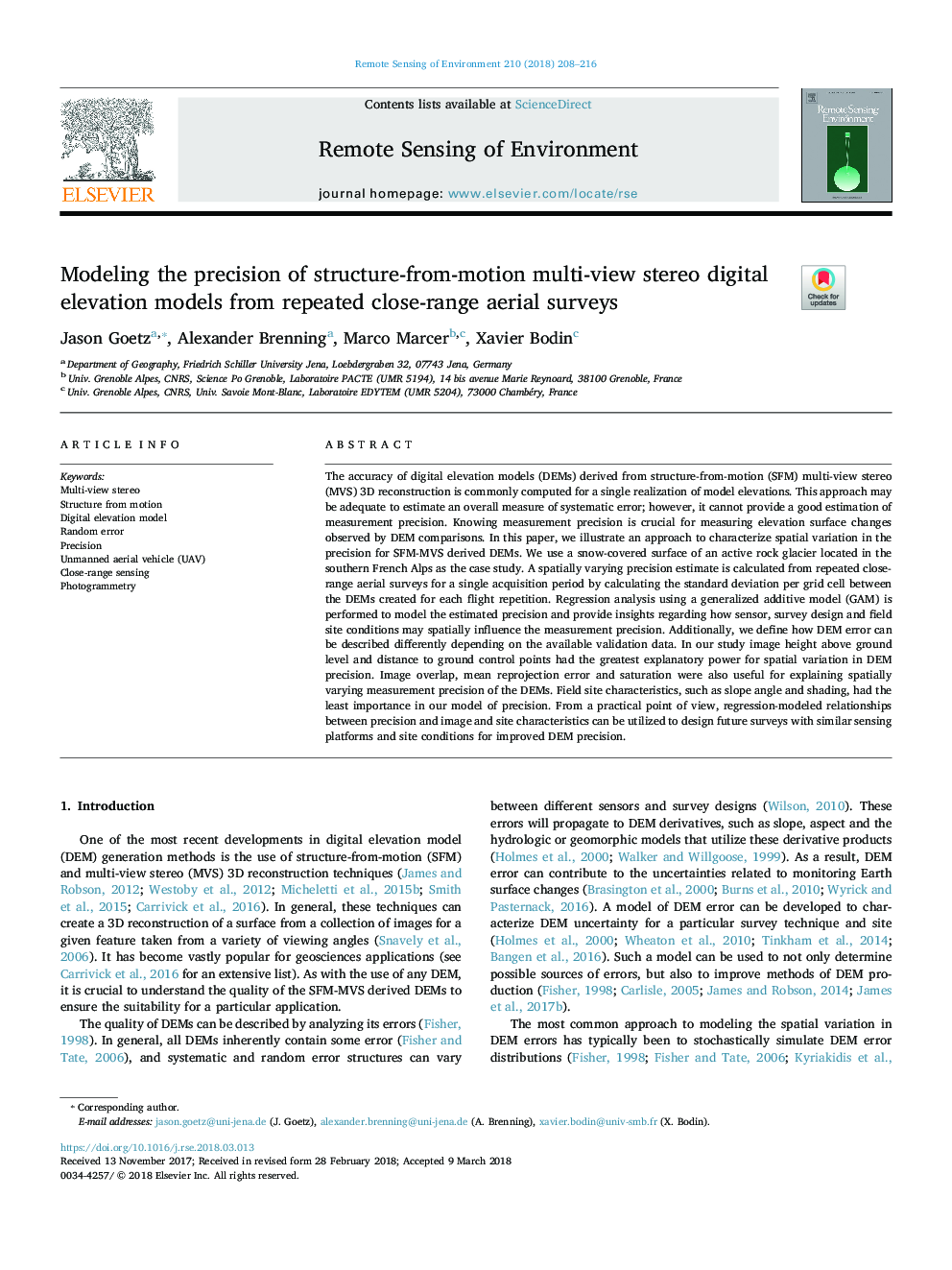| کد مقاله | کد نشریه | سال انتشار | مقاله انگلیسی | نسخه تمام متن |
|---|---|---|---|---|
| 8866596 | 1621190 | 2018 | 9 صفحه PDF | دانلود رایگان |
عنوان انگلیسی مقاله ISI
Modeling the precision of structure-from-motion multi-view stereo digital elevation models from repeated close-range aerial surveys
ترجمه فارسی عنوان
مدل سازی دقیق مدل های ارتقاء دیجیتال استریو چند منظوره از نظرسنجی هوایی نزدیک به محدوده وسیع
دانلود مقاله + سفارش ترجمه
دانلود مقاله ISI انگلیسی
رایگان برای ایرانیان
کلمات کلیدی
موضوعات مرتبط
مهندسی و علوم پایه
علوم زمین و سیارات
کامپیوتر در علوم زمین
چکیده انگلیسی
The accuracy of digital elevation models (DEMs) derived from structure-from-motion (SFM) multi-view stereo (MVS) 3D reconstruction is commonly computed for a single realization of model elevations. This approach may be adequate to estimate an overall measure of systematic error; however, it cannot provide a good estimation of measurement precision. Knowing measurement precision is crucial for measuring elevation surface changes observed by DEM comparisons. In this paper, we illustrate an approach to characterize spatial variation in the precision for SFM-MVS derived DEMs. We use a snow-covered surface of an active rock glacier located in the southern French Alps as the case study. A spatially varying precision estimate is calculated from repeated close-range aerial surveys for a single acquisition period by calculating the standard deviation per grid cell between the DEMs created for each flight repetition. Regression analysis using a generalized additive model (GAM) is performed to model the estimated precision and provide insights regarding how sensor, survey design and field site conditions may spatially influence the measurement precision. Additionally, we define how DEM error can be described differently depending on the available validation data. In our study image height above ground level and distance to ground control points had the greatest explanatory power for spatial variation in DEM precision. Image overlap, mean reprojection error and saturation were also useful for explaining spatially varying measurement precision of the DEMs. Field site characteristics, such as slope angle and shading, had the least importance in our model of precision. From a practical point of view, regression-modeled relationships between precision and image and site characteristics can be utilized to design future surveys with similar sensing platforms and site conditions for improved DEM precision.
ناشر
Database: Elsevier - ScienceDirect (ساینس دایرکت)
Journal: Remote Sensing of Environment - Volume 210, 1 June 2018, Pages 208-216
Journal: Remote Sensing of Environment - Volume 210, 1 June 2018, Pages 208-216
نویسندگان
Jason Goetz, Alexander Brenning, Marco Marcer, Xavier Bodin,
